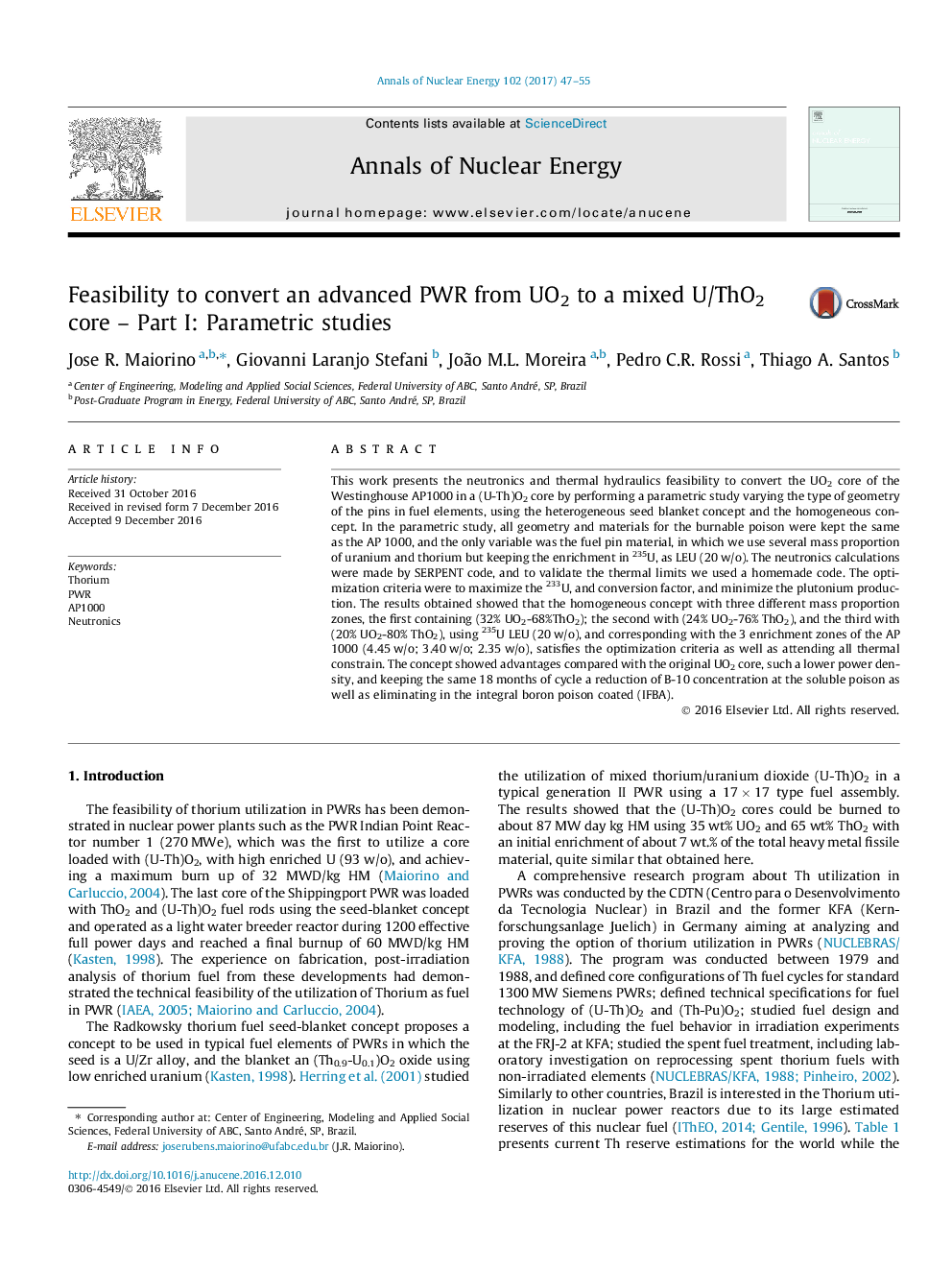| Article ID | Journal | Published Year | Pages | File Type |
|---|---|---|---|---|
| 5475303 | Annals of Nuclear Energy | 2017 | 9 Pages |
Abstract
This work presents the neutronics and thermal hydraulics feasibility to convert the UO2 core of the Westinghouse AP1000 in a (U-Th)O2 core by performing a parametric study varying the type of geometry of the pins in fuel elements, using the heterogeneous seed blanket concept and the homogeneous concept. In the parametric study, all geometry and materials for the burnable poison were kept the same as the AP 1000, and the only variable was the fuel pin material, in which we use several mass proportion of uranium and thorium but keeping the enrichment in 235U, as LEU (20Â w/o). The neutronics calculations were made by SERPENT code, and to validate the thermal limits we used a homemade code. The optimization criteria were to maximize the 233U, and conversion factor, and minimize the plutonium production. The results obtained showed that the homogeneous concept with three different mass proportion zones, the first containing (32% UO2-68%ThO2); the second with (24% UO2-76% ThO2), and the third with (20% UO2-80% ThO2), using 235U LEU (20Â w/o), and corresponding with the 3 enrichment zones of the AP 1000 (4.45Â w/o; 3.40Â w/o; 2.35Â w/o), satisfies the optimization criteria as well as attending all thermal constrain. The concept showed advantages compared with the original UO2 core, such a lower power density, and keeping the same 18Â months of cycle a reduction of B-10 concentration at the soluble poison as well as eliminating in the integral boron poison coated (IFBA).
Keywords
Related Topics
Physical Sciences and Engineering
Energy
Energy Engineering and Power Technology
Authors
Jose R. Maiorino, Giovanni Laranjo Stefani, João M.L. Moreira, Pedro C.R. Rossi, Thiago A. Santos,
